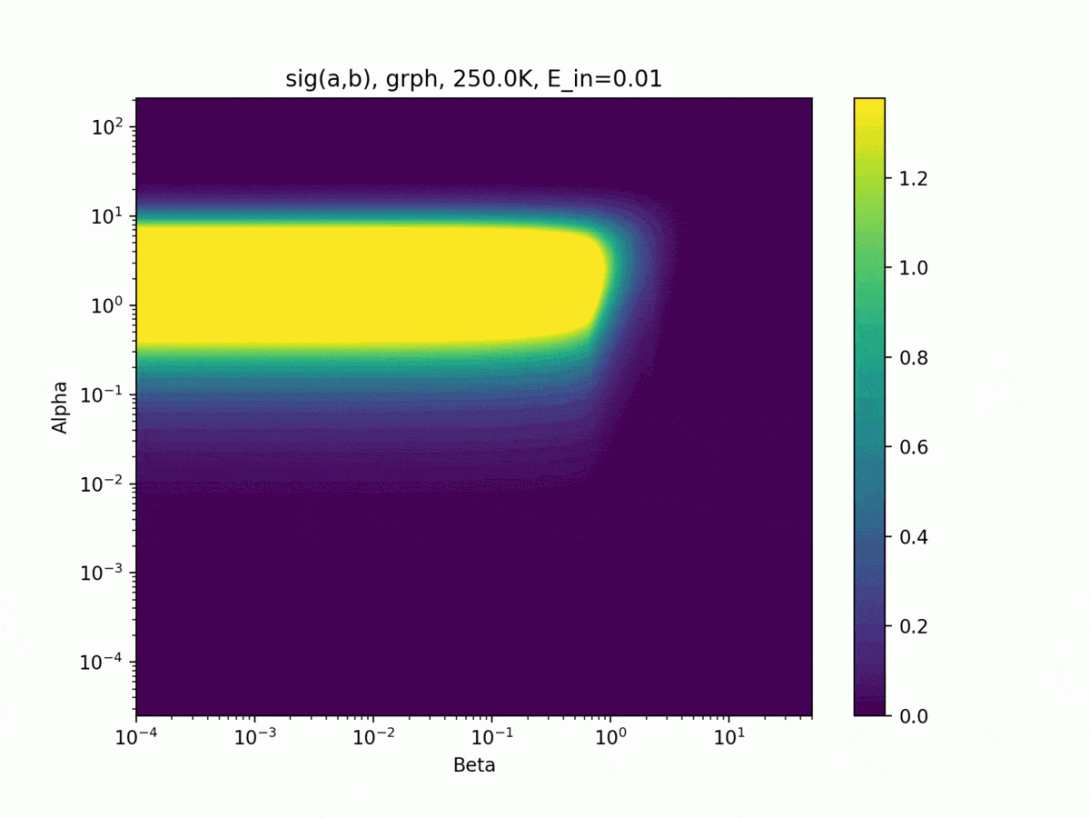Accurate simulations of nuclear systems rely on accurate cross-section data. Due to the complications of thermal scattering, a large amount of thermal data needs to be stored for large temperature ranges due to the needed accuracy. This work aims to reduce the memory burden for large temperature ranges while preserving the needed accuracy.

Current implementations of thermal scattering data into Monte Carlo codes such as MCNP rely on the storage of discrete CDFs as functions of incoming and outgoing energy as well as scattering angles. Due to the complications associated with the thermal scattering law, a large quantity of data must be stored for each temperature in the simulation. In this current implementation, NJOY is used to create correlated energy-angle distributions. These distributions are represented by a set of equally probable final energy bins for each of the initial energy bins. In addition, a set of equally probable cosine bins are tabulated for each incoming and outgoing energy pair. Furthermore, the distributions created are temperature dependent meaning that you must store these distributions for every temperature being simulated. This scheme leads to a large quantity of data needing be stored to accurately represent a model though large temperature variations, such as reactor transience in accident scenarios.
Work previously conducted at Rensselaer Polytechnic Institute (RPI) and currently being further developed, aims to remove the large data storage requirement that is associated with modeling systems through large temperature variations. This is achieved by altering the domain the data is stored in as well as removing the temperature dependence. By transitioning the data storage from the energy and scattering angle domain into the α and β (momentum and energy transfer, respectively) domain, the dependence of the scattering angle on two inputs, incoming and outgoing energy, can be reduced to a single energy transfer term, β. Furthering this, the temperature dependence can be removed by storing functional coefficients which can be evaluated at any temperature instead of storing CDFs for discrete temperatures. Implementation of this new scheme can lead to a ten-fold memory reduction for thermal scattering data.